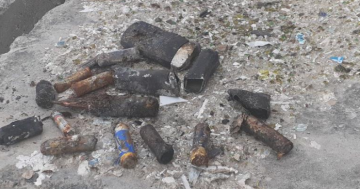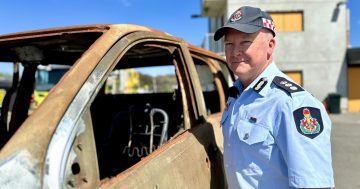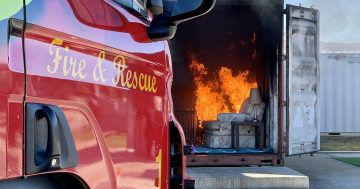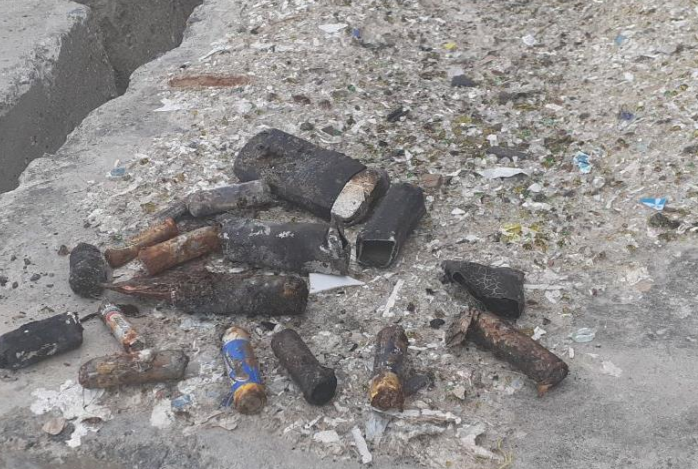
Burnt batteries were found by investigators in the Hume recycling facility’s waste compactor and chute. Photo: ACT Fire and Rescue.
It was Boxing Day last year when Canberra woke up to find the recycling centre in Hume engulfed by fire.
A subsequent investigation traced it back to lithium-ion batteries that had found their way into the waste compactor and been crushed, resulting in an explosion.
But this incident was only the beginning. Over the past 12 months, ACT Fire and Rescue has attended more than 20 incidents involving lithium-ion batteries.
One, at a food delivery services on Kneeshaw Street in Monash, involved an electric scooter. The fire was contained to one room, and all occupants self-evacuated.
More recently, on 25 November, the Canberra Centre was partially evacuated after a tradesperson accidentally cut into a power tool battery.
Now, as we approach Christmas and people everywhere are wrapping battery-powered toys and devices for the big day, ACT Fire and Rescue and the ACT Government’s Transport Canberra and City Services directorate have joined forces to remind Canberrans of the dangers of lithium-ion.
“Lithium-ion batteries can suffer what we call ‘thermal runaway’ where the damage or malfunction of the battery can perpetrate a fire for much longer than what would normally be expected,” ACT Fire and Rescue Superintendent Greg Mason said.
“There’s a lot of energy stored in them and it’s the uncontrolled release of that energy that is of concern to us.”
Local firefighters have previously expressed concerns about electric cars, but this time the focus is on bikes, scooters, skateboards and other smaller vehicles that are easier for the hoi polloi to deal with.
“What we’re advising people is to charge these sorts of things in a safe place, out of the house and in a car port, garage or shed,” Greg said.
“Make sure you use the correct charger for the device, and if there is anything unusual – overheating, smoke, discolouration, mechanical damage – we strongly advise moving the device to a safe area and monitoring it. If it starts smoking, put it in a bucket of water to cool it.”
As always, if the situation gets out of control, the advice is to call the emergency line on 000.
Since the Hume recycling plant fire, the ACT Government has increased battery-detection measures through thermal-imaging cameras at not only the main waste collection points but also in the trucks.
“We’ve instigated many different measures since the Mugga fire last year,” ACT NoWaste branch manager Margaret Kitchin said.
“We’ve improved some of the detection. We’ve put in cameras detecting hotspots within the facility and we’ve done some very thorough audits around fires at all of our facilities.”
The government also teamed up with the NSW Government and NSW regional councils through the Canberra Region Joint Organisation to develop a communications campaign.
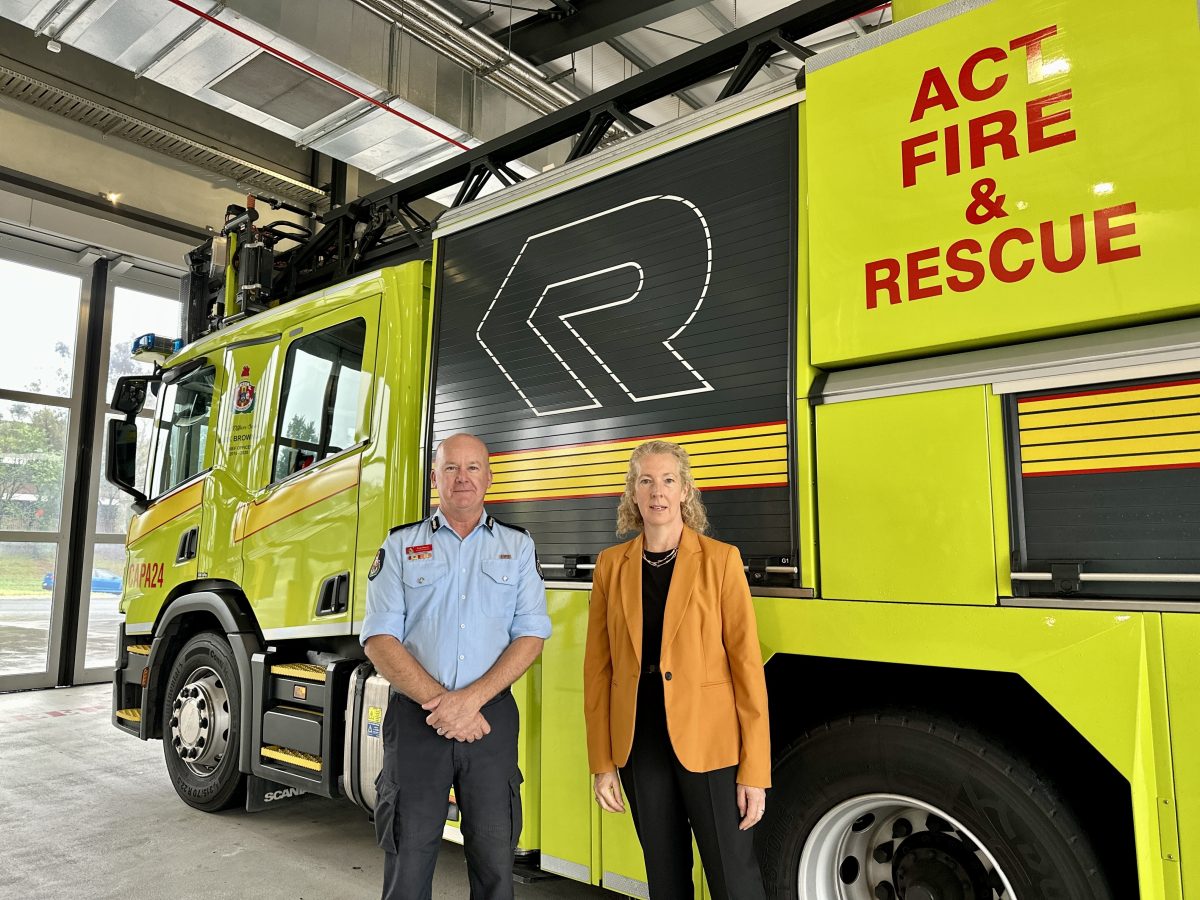
ACT Fire & Rescue Superintendent Greg Mason and ACT NoWaste executive branch director Margaret Kitchin. Photo: James Coleman.
The message is simple.
“Batteries continue to be a risk to our recycling facilities as well as our landfill,” Margaret said.
“The main message to all of our households is that batteries do not go in any of the household bins.”
She instead points Canberrans towards 60 free drop-off points for batteries across the ACT, hosted by B-cycle.
Launched in January 2022, this is a national scheme run by the Battery Stewardship Council (BSC) to facilitate recycling of household batteries, and easily removable batteries such as those from power tools and cameras.
Transfer stations at Mugga Lane and Mitchell will deal with embedded batteries inside the likes of electric toothbrushes and headphones.
Find your nearest drop-off point on the B-cycle website.












